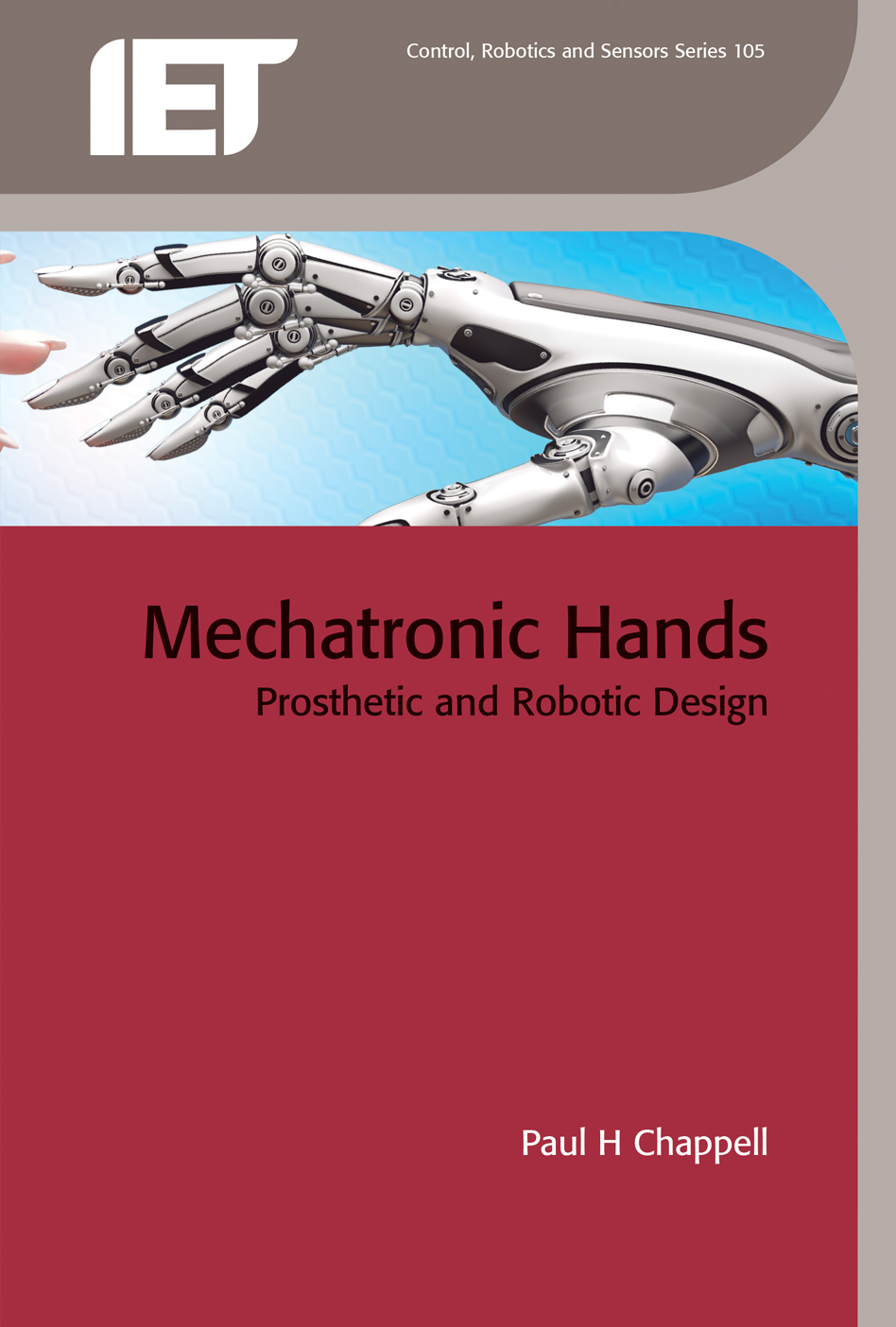- Agricultural Engineering and Technology
- Applied Physics
- Built Environment
- Computing and Networks
- Control, Robotics and Sensors
- Electrical Regulations
- Electromagnetics and Radar
- Energy Engineering
- Healthcare Technologies
- History and Management of Technology
- IET Codes and Guidance
- Manufacturing
- Materials, Circuits and Devices
- Model Forms
- Security
- Telecommunications
- Transportation

Mechatronic Hands
Prosthetic and robotic design
by Paul H. Chappell
This book describes the technical design characteristics of the main components that go into forming an artificial hand, whether it is a simple design that does not have a natural appearance, or a more complicated design where there are multiple movements of the fingers and thumb. Mechanical components obviously form the structure of any hand, while there are some lesser known ideas that need to be explored such as how to process a slip signal.
The focus of the book is the design of artificial hands for people, who through trauma or congenitally, only have one or no natural hands, with an emphasis on myolectric hands - powered hands that are controlled by the small electrical signals from residual muscles. An in-depth treatment of mechanisms, sensors, control, and hand assessment is included.
Bringing together decades of research from the University of Southampton - a centre of excellence in this field - this book is essential reading for researchers and advanced students of robotics, prosthetics and mechatronics as well as professional engineers and prosthetists in universities, industry and hospitals who are involved in the design and manufacture of prosthetic hands.
About the Author
Paul H. Chappell is an Associate Professor of Medical Engineering in Electronics and Computer Science at the University of Southampton (UK). Dr Chappell has published over 160 papers and has extensive teaching experience in power electronics, electromechanical design and medical electronics. He is a Fellow of the Institution of Engineering and Technology, a Fellow of the Institute of Physics and Engineering in Medicine, a Senior Member of the Institute of Electrical and Electronic Engineers and a Member of the Institute of Physics.
Publication Year: 2016
Pages: 192
ISBN-13: 978-1-78561-154-4
Format: HBK
